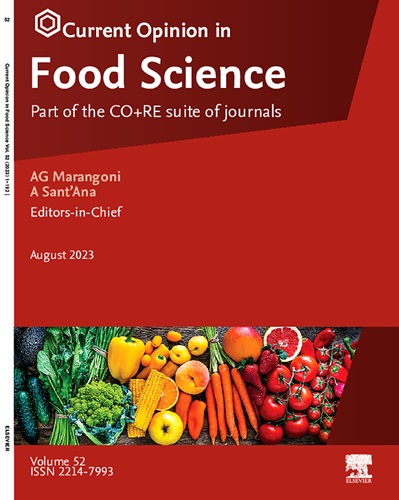Modification and glycation microalgae proteins by non-thermal assisted process
IF 9.1
1区 农林科学
Q1 FOOD SCIENCE & TECHNOLOGY
引用次数: 0
Abstract
Plant proteins represent a promising solution worldwide due to their low production costs and easy accessibility. Additionally, plant proteins are more environmentally sustainable. Therefore, the potential of plant proteins to meet the protein requirements as an alternative source is increasingly gaining importance. Parallel to these developments, there is a growing interest and demand in food technologies for microalgae. The main reasons for this trend include their sustainable sources not only for proteins but also for various bioactive compounds and ingredients in food technology, as well as their positive impact on carbon emissions through carbon dioxide utilization. However, despite the significant demand for algae proteins from producers and consumers, their low solubility, viscosity, texture, and aroma defects limit their usage in foods. Various modification methods and glycation applications are needed to reduce these issues. However, it is crucial that these processes result in only the targeted changes in protein structures with minimal heat and chemical usage. Non-thermal processes such as sonication, high pressure, and cold plasma can be utilized for this purpose. Additionally, two main approaches can be used for microalgae protein modification: (i) modification of algae biomass followed by protein isolation or direct use/consumption of biomass, and (ii) isolation of protein from biomass followed by subsequent modification processes. This review offers a broad perspective regarding algal proteins. Modification techniques applied to plant proteins could be beneficial in enlightening the challenges linked to the digestibility, technofunctional, and sensory attributes of algae proteins. Much more research and innovation are required to enhance the potential of algae proteins.
微藻蛋白的非热辅助修饰和糖基化
植物蛋白由于其低生产成本和易于获取,在世界范围内代表了一种很有前途的解决方案。此外,植物蛋白更具有环境可持续性。因此,植物蛋白作为满足蛋白质需求的替代来源的潜力越来越重要。在这些发展的同时,人们对微藻食品技术的兴趣和需求也在不断增长。这一趋势的主要原因包括它们不仅是蛋白质的可持续来源,也是食品技术中各种生物活性化合物和成分的可持续来源,以及它们通过利用二氧化碳对碳排放的积极影响。然而,尽管生产者和消费者对藻类蛋白的需求很大,但它们的低溶解度、粘度、质地和香气缺陷限制了它们在食品中的应用。需要各种改性方法和糖基化应用来减少这些问题。然而,至关重要的是,这些过程只会导致蛋白质结构的靶向变化,而热量和化学物质的使用最少。非热过程,如超声、高压和冷等离子体可用于此目的。此外,微藻蛋白质修饰可采用两种主要方法:(i)修饰藻类生物量,然后分离蛋白质或直接使用/消耗生物量,以及(ii)从生物量中分离蛋白质,然后进行后续修饰过程。这一综述为藻类蛋白质的研究提供了广阔的前景。应用于植物蛋白的修饰技术可能有助于解决与藻类蛋白的消化率、技术功能和感官属性相关的挑战。要提高藻类蛋白质的潜力,还需要进行更多的研究和创新。
本文章由计算机程序翻译,如有差异,请以英文原文为准。
求助全文
约1分钟内获得全文
求助全文
来源期刊

Current Opinion in Food Science
Agricultural and Biological Sciences-Food Science
CiteScore
18.40
自引率
4.00%
发文量
157
审稿时长
92 days
期刊介绍:
Current Opinion in Food Science specifically provides expert views on current advances in food science in a clear and readable format. It also evaluates the most noteworthy papers from original publications, annotated by experts.
Key Features:
Expert Views on Current Advances: Clear and readable insights from experts in the field regarding current advances in food science.
Evaluation of Noteworthy Papers: Annotated evaluations of the most interesting papers from the extensive array of original publications.
Themed Sections: The subject of food science is divided into themed sections, each reviewed once a year.
 求助内容:
求助内容: 应助结果提醒方式:
应助结果提醒方式:


